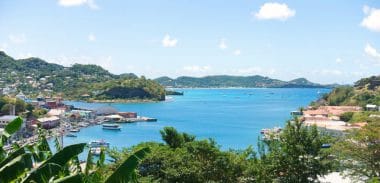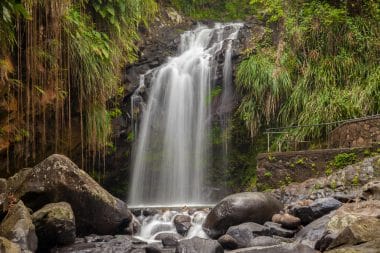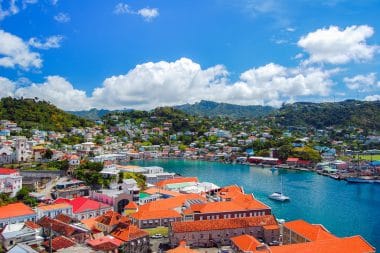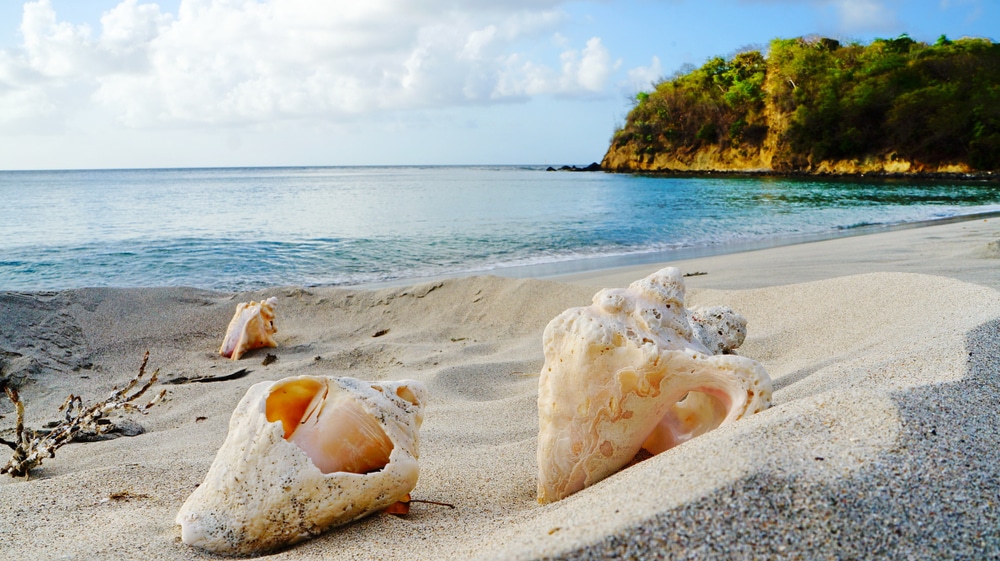The Caribbean island of Grenada is the southernmost of the Leeward Islands. La Grenade was what the French called the island in colonial times: the jewel. And she is a jewel indeed. It is of volcanic origin, only 18 kilometers wide and about 34 kilometers long, but the extinct volcanoes rise up to 840 meters out of the sea.
The island is almost completely covered with rainforest. Dreamlike beaches invite you to linger, while inland, untouched nature, crater lakes, waterfalls and hot springs beckon. And despite all this, Grenada is still considered an insider tip and is not flooded by crowds of tourists.
Caribbean dream beaches

Whether beaches with fine light sand that slope gently into the water and are therefore ideal for families, black-gray beaches that are reminiscent of the volcanic origin of the island or beaches where the palm trees grow into the sea and the coconuts practically fall into your lap: here everyone will find their own personal dream beach.
And with all this, you can still find beaches where you are really lonely. For example, in the north of the island there are some small offshore islands that are uninhabited and can only be reached by boat. Only a few find their way there. A detour is worthwhile for those who want to experience Robinson’s loneliness.
Grenada – A paradise for all divers and other water sports enthusiasts
On an island like Grenada, water sports are of course the top priority when it comes to outdoor activities. Surfing is not possible, the water is too calm and the winds too calm. But divers and snorkelers get their money’s worth in the waters off the island. In addition to the coral gardens with their colorful tropical underwater wildlife, parrotfish, diadem angelfish, surgeonfish and other colorful sea creatures, the Grenada coast is also considered a top wreck area. Around a dozen shipwrecks can be discovered during dives, including “Bianca C”, which is often referred to as the Titanic of the Caribbean .

Another highlight is the Scultpure Park. The underwater museum with an area of more than 800 square meters was created in 2007 by the English diver Jason de Caires-Taylor. In the meantime, the approximately 80 figures are populated by sea urchins and corals. Fish also enjoy it.
The calm sea off Grenada is also ideal for another water sport: stand-up padding. Kayak tours are also offered. And of course, swimming in the turquoise blue sea is always a pleasure. But there is also the possibility to take a refreshing dip in most of the natural pools at the waterfalls inland.
Outdoor activities in unspoiled nature away from the sea
Most of Grenada is covered with rainforest. The easiest way to discover the natural beauties is to take a tour of the island by car along the coastal roads. But there is also the possibility to walk on paths, some of which still go back to the paths of the indigenous people. There are now marked hiking trails, for example up to the summit of Qua Qua, Grenada’s second highest mountain at 700 meters.
Another hiking trail leads to the Seven Sisters, seven contiguous waterfalls. The crater lake Grand Etang is also a popular hiking destination. If you want to go even further into the rainforest, you have the opportunity to be guided by a guide and discover very special natural beauties; Craters, waterfalls and a flora and fauna of exotic beauty.
St. George’s, the capital of Grenada

St. George’s was founded by the French in the mid-17th century as Fort Royal. In the course of history, the city changed affiliation several times. The French and Britons exercised colonial rule over town and country and left their mark. Three forts lie above the city and those who dare to climb will be rewarded with a fantastic view over the city, harbor and surrounding area. The city itself stretches steeply up into the hills. But the most impressive thing is probably the city’s large market. Here you can find an abundance of typical fruit and vegetables, spices, but also souvenirs.
Culinary
In addition to all the scenic advantages, Grenada is also considered the spice island of the Caribbean. Mainly nutmeg is grown here, but also cinnamon, cloves, ginger and other spices. Grenada’s cuisine is correspondingly spicy. It is Creole, influenced by African, Native American and Indian influences. The sea is never far away, and so fish and seafood play a major role. But chicken and other types of meat are also popular.
The tropical fruits such as pineapple, mango, cashew fruit, papaya or soursop are also unsurpassed in taste, which are worlds better than the imported goods in our latitudes straight from the tree. Grenada’s national dish is oildown. The colorful mixture of different types of bananas, breadfruit, callaloo, a kind of spinach, coconut milk, spices and, depending on taste, other vegetables and meat or fish, is usually only served at larger festivals, as it is very complex to prepare and therefore not practical for home use.
Inextricably linked with Grenada is nutmeg. It can even be found on the flag of the island state. And it is not only used as a spice. It is considered a cultural asset and is used for what feels like everything the kitchen has to offer. They are processed into jam, oil, syrup, liqueur or rum.


